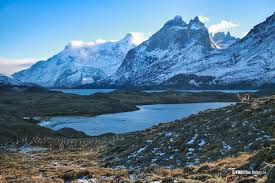Mangrove Ecosystems: A Bulwark Against Climate Change in South America
South America's extensive mangrove forests are vital for coastal protection and resilience against the escalating impacts of climate change. These unique ecosystems, however, face increasing pressure from both anthropogenic activities and the accelerating effects of a changing climate. Understanding their crucial role and implementing effective conservation strategies are paramount for the future of South American coastal communities.
The Invaluable Role of Mangrove Ecosystems
Mangrove ecosystems act as natural barriers, safeguarding coastlines from the erosive forces of waves and tides, mitigating the destructive power of storm surges, and providing a buffer against rising sea levels. Their complex root systems stabilize sediments, preventing coastal erosion and protecting vital infrastructure. Beyond their physical protective role, mangroves support an extraordinary diversity of marine and terrestrial life, serving as critical nurseries, breeding grounds, and habitats for countless species. This biodiversity underpins healthy fisheries and contributes to the overall ecological integrity of coastal regions. Furthermore, mangroves are exceptionally efficient carbon sinks, sequestering significant quantities of atmospheric carbon dioxide and thus playing a vital role in global carbon cycling and climate change mitigation.
Climate Change Impacts on South American Coastlines
The escalating impacts of climate change pose severe threats to South America's coastal communities and the delicate balance of its mangrove ecosystems. Rising sea levels are inundating low-lying areas, while increased storm intensity and frequency lead to more frequent and severe coastal erosion and flooding. These extreme weather events, exacerbated by climate change, threaten lives, livelihoods, and vital infrastructure. The situation is further complicated by human activities such as deforestation, pollution from agricultural runoff and industrial discharge, and unsustainable coastal development practices, which degrade mangrove ecosystems and increase the vulnerability of coastal regions to climate change impacts. These cumulative stresses place immense pressure on the ability of these critical ecosystems to provide their essential services.
Protecting Coastal Communities Through Mangrove Conservation
Effective mangrove conservation is not merely an environmental imperative; it is crucial for the economic and social well-being of coastal communities throughout South America. Governments, local communities, and international organizations must collaborate to prioritize the protection and restoration of mangrove ecosystems. This requires implementing stringent regulations to control coastal development, prohibiting unsustainable resource extraction, and mitigating pollution. Sustainable fishing practices are equally critical to ensure the long-term health of both the mangrove ecosystems and the communities that depend on them. Crucially, the active participation and empowerment of local communities in conservation efforts is essential for ensuring the success of these initiatives. By fostering a sense of ownership and responsibility, community-based conservation programs promote sustainable practices and increase the long-term effectiveness of protection measures.
Successful Mangrove Conservation Initiatives in South America
Several successful mangrove restoration and conservation projects across South America demonstrate the potential for positive change. In Brazil's Baixada Maranhense region, large-scale restoration projects have not only revived degraded mangrove areas but have also generated significant economic opportunities for local communities through sustainable tourism and fisheries management. Similarly, in Colombia's Gulf of Morrosquillo, concerted conservation efforts have protected the coastline from erosion, improved water quality, and significantly boosted tourism revenue, providing a compelling example of the economic benefits of mangrove protection. These success stories highlight the importance of integrated approaches that combine ecological restoration with socioeconomic development.
A Call to Action for Coastal Resilience
The protection and restoration of South America's mangrove ecosystems are not merely environmental concerns but are fundamental to building resilient coastal communities capable of withstanding the impacts of climate change. Individual actions, from raising awareness and supporting local initiatives to advocating for strong environmental policies, play a crucial role in safeguarding these vital ecosystems. By working collaboratively across sectors and borders, we can ensure the long-term health of South America's coastal regions and build a more sustainable and resilient future for all.
Let's unite in our commitment to protecting these invaluable ecosystems. Share this article and inspire others to join the movement for mangrove conservation and coastal resilience. #MangroveConservation #CoastalResilience #ClimateAction #SouthAmerica




